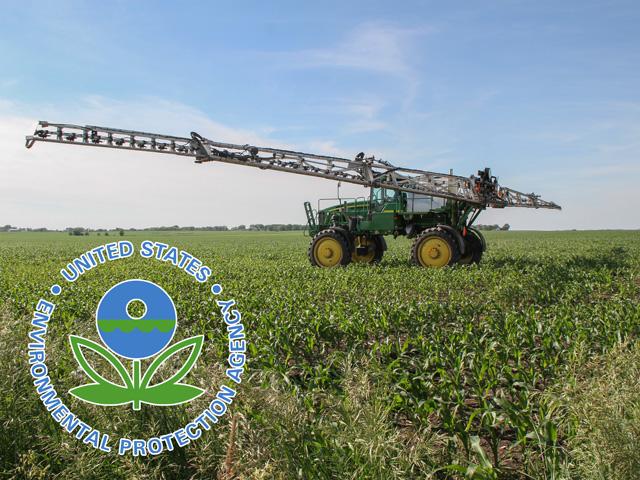EPA Pesticide Decisions Roll In
EPA Releases Interim Registration Decisions for Pyrethroids, Paraquat
ROCKVILLE, Md. (DTN) -- EPA released a flurry of interim registration decisions for 13 pyrethroid insecticides and one herbicide, paraquat, on Thursday morning.
The decisions remain interim and not finalized, as the agency still has additional assessments to conduct, but they are a major step toward establishing the chemicals' continued use in the U.S.
Both decisions list some new use restrictions and requirements, summarized below.
PARAQUAT
Paraquat is a Group 22 herbicide sold under brand names like Gramaxone, Firestorm and Parazone. Its use has increased steadily in the U.S. since 2013, with the growth of herbicide resistance in weed populations. Applications rose from under 5 million pounds a year to as high as 12 million pounds per year in 2017, with most growth concentrated in soybeans, cotton, orchards and pasture.
Paraquat has been the target of lawsuits and controversy in the past, given its high toxicity, its role in poisoning accidents and research suggesting it might be linked to Parkinson's disease. Most recently, legislation was introduced in Congress to halt the use of pesticides that are banned in the EU or Canada, which would include paraquat. See more here: https://www.dtnpf.com/….
The herbicide is undergoing EPA's routine 15-year re-registration review, and the agency released its draft human health and ecological risk assessments of paraquat in October 2019. Now, after reviewing public comments, it has released this interim decision, which states that health risks are minimal if the label is followed: "Based on this review, EPA concluded that there is insufficient evidence to link registered paraquat products to any of the health outcomes investigated, including Parkinson's Disease, when used according to the label."
The agency is, however, proposing the following changes to paraquat use to protect applicators and the environment:
P[L1] D[0x0] M[300x250] OOP[F] ADUNIT[] T[]
--Prohibiting aerial application for all uses and use sites except cotton desiccation;
--Prohibiting pressurized handgun and backpack sprayer application methods on the label;
--Limiting the maximum application rate for alfalfa to one pound of active ingredient per acre;
--Requiring enclosed cabs or respirator use if area treated in 24-hour period is 80 acres or less;
--Requiring a residential area drift buffer and 7-day restricted entry interval (REI) for cotton desiccation;
--Requiring a 48-hour REI for all other crops and uses;
--Adding mandatory spray drift management label language;
--Allowing truck drivers who are not certified applicators to transport paraquat when certain conditions are met.
See more on the interim decision here: https://www.epa.gov/….
This decision follows new rules from EPA on labeling, packaging and handling requirements for paraquat that were instituted in 2016 to reduce accidental poisonings and are underway now. See more here: https://www.epa.gov/….
PYRETHROIDS
Pyrethroids are a large class of insecticides that target a wide range of biting and sucking insects in corn, soybean, wheat and cotton as well as other crops. (They also have consumer and public health uses in pet applications, termite treatments and mosquito control.)
Their agricultural use has increased in recent years, particularly in the fight against soybean aphids, which have begun to evolve resistance to two common pyrethroids, bifenthrin (sold in generics and products like Discipline and Brigade) and lamba-cyhalothrin (found in both generics and products like Warrior and Karate).
This class of chemicals has been under re-registration review by EPA since 2008. In this particular announcement, EPA is publishing interim decisions for 13 pyethroids (bifenthrin, cyfluthrins, cyphenothrin, deltamethrin, d-phenothrin, esfenvalerate, fenpropathrin, imiprothrin, permethrin, prallethrin, tau-fluvalinate, tefluthrin and tetramethrin).
Most of the changes EPA has proposed focus on better protecting applicators and their surroundings, reducing runoff and spray drift and adding new label language, some of it in Spanish.
See more here: https://www.epa.gov/….
Emily Unglesbee can be reached at Emily.unglesbee@dtn.com.
Follow her on Twitter @Emily_Unglesbee.
(c) Copyright 2020 DTN, LLC. All rights reserved.





